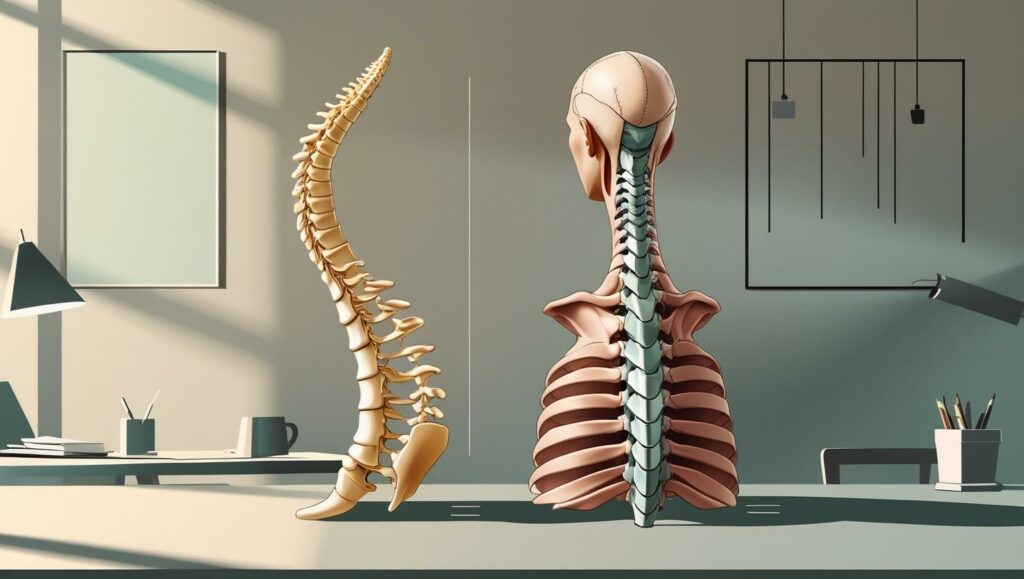Many people today suffer from what is commonly referred to as a neck hump — a visible bump or rounded curve at the base of the neck. This condition, medically known as a “Dowager’s Hump” or postural kyphosis, is often caused by poor posture, extended screen time, or lack of spinal support.
In this comprehensive guide, you’ll learn how to fix neck hump naturally through daily habits, posture correction, and specific stretches and exercises. Whether your goal is to improve your appearance or prevent long-term spine damage, this article offers a step-by-step approach.
What Is a Neck Hump?
A neck hump refers to an accumulation of fat, poor spinal alignment, or muscular imbalance at the base of the cervical spine (C7 vertebra). It’s sometimes called:
- Dowager’s hump
- Buffalo hump
- Text neck or tech neck
- Forward head posture hump
This condition is not just a cosmetic issue — it can affect balance, cause headaches, neck pain, and reduce overall mobility.
How to Fix Neck Hump: Common Causes
Before learning how to fix neck hump, it’s important to understand the root causes:
- Poor posture – prolonged slouching, especially at desks or with screens
- Forward head position – head jutting forward places strain on upper back muscles
- Weak upper back – muscular imbalances and lack of support
- Obesity or fat pad accumulation – especially with Cushing’s syndrome
- Osteoporosis or spinal degeneration – in older adults
For most younger people, the cause is usually postural and muscular, which makes it reversible with the right steps.
Step-by-Step: How to Fix Neck Hump
1. Improve Posture Awareness
One of the leading causes of neck humps is slouching or craning the neck forward while working, texting, or driving. You must become aware of your posture throughout the day.
- Keep your head aligned with your shoulders
- Avoid tilting your chin forward or down
- Pull shoulders back and down regularly
- Adjust your workstation to eye level
2. Do Neck Hump Exercises
These targeted movements strengthen your upper back and correct posture. Perform them daily for the best results:
Chin Tucks
While standing or sitting tall, tuck your chin in slightly (like making a double chin) and hold for 5 seconds. Repeat 10 times.
Wall Angels
Stand with your back against a wall, arms at a 90-degree angle, and try to slide them up like a snow angel while keeping your back flat.
Thoracic Extensions
Lie on a foam roller placed along the spine. Slowly arch backward over the roller to open up the chest and reverse hunching.
Shoulder Blade Squeezes
Sit or stand tall and squeeze shoulder blades together for 10 seconds. Repeat 10–15 times daily.
3. Stretch Tight Muscles
Posture-related neck humps are often caused by tight chest and neck muscles. Stretch these regularly:
- Pec stretches (doorway stretch)
- Upper trapezius stretch
- Sternocleidomastoid (SCM) stretch

4. Ergonomic Adjustments
To sustain your improvements, make sure your daily environment supports good posture:
- Use a standing desk or raise your monitor to eye level
- Sit with your feet flat, knees at 90°
- Use lumbar support for your chair
- Hold your phone at eye level to prevent “text neck”
5. Massage and Myofascial Release
Use a massage ball, foam roller, or a professional therapist to release tension in the upper back and shoulders. This helps restore mobility and reduce muscle knots that contribute to poor posture.
6. Maintain a Healthy Weight
In some cases, a fat pad hump can develop with weight gain, especially around the neck and shoulders. Losing excess weight through diet and exercise can reduce the appearance of a hump.
When to See a Doctor
If your neck hump is:
- Growing rapidly
- Hard, painful, or inflamed
- Accompanied by numbness or balance issues
Then consult a healthcare provider. It could be linked to hormonal issues (e.g., Cushing’s syndrome), osteoporosis, or spinal deformities.
How to Fix Neck Hump with Long-Term Habits
Correcting a neck hump doesn’t happen overnight. It requires consistent lifestyle changes:
- Daily exercise — 10–15 minutes can make a huge difference
- Conscious posture correction — check yourself in mirrors or set phone reminders
- Strengthen core muscles — weak abs lead to upper back compensation
- Sleep on the right pillow — too high or too low strains your neck
Can Neck Hump Be Reversed?
If the cause is postural or muscular, then yes — a neck hump can be significantly improved or even eliminated through exercise, stretching, and proper ergonomics.
If the hump has existed for years or is due to bone structure, it may be harder to reverse fully — but its size and impact can still be reduced.
How to Fix Neck Hump
A neck hump may seem like a minor cosmetic issue, but it often signals deeper problems in posture, spinal alignment, and lifestyle habits. The good news? With consistent effort, awareness, and proper movement, you can fix neck hump naturally and feel better, taller, and more confident.
Start with 10 minutes of daily posture exercises, improve your workspace, and listen to your body. Over time, you’ll begin to see and feel the difference.





